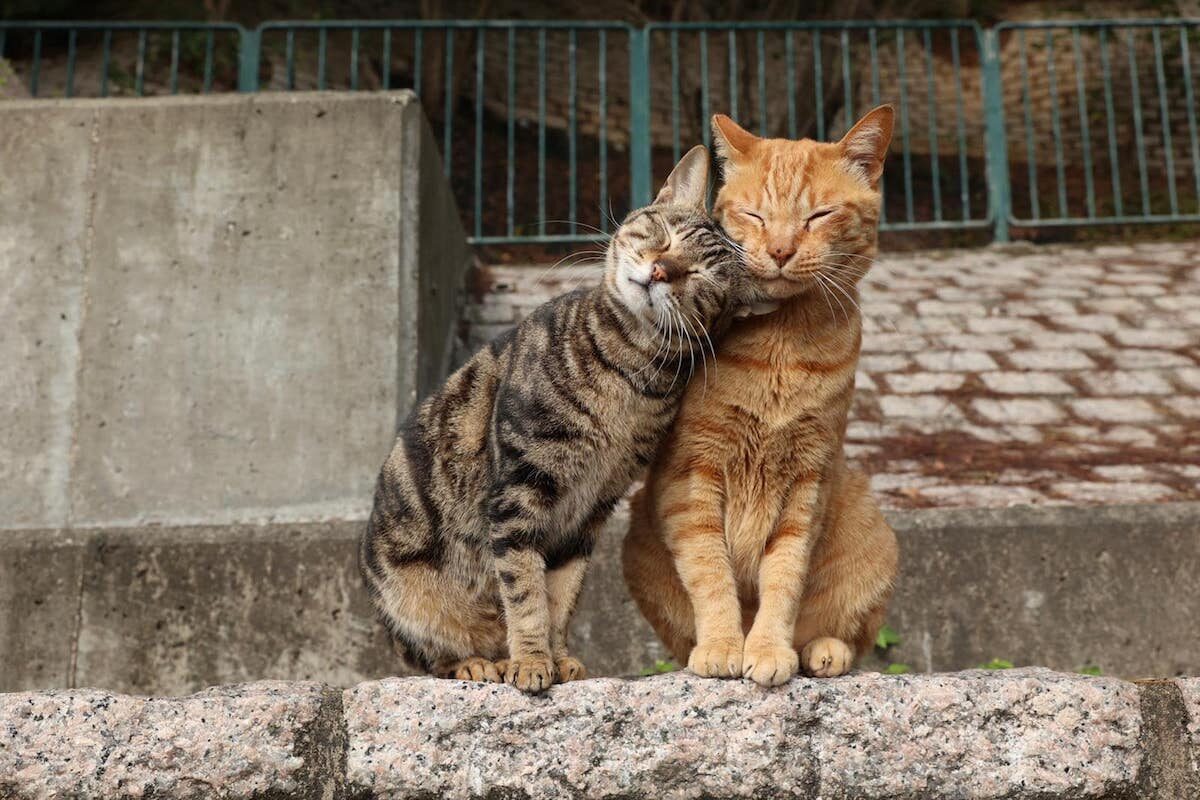Cats have been domesticated for thousands of years and have become one of the most popular pets around the world. However, not all cats are fortunate enough to have a loving home and some end up living as strays on the streets. While both pet cats and stray cats may look similar, there are significant differences between them that require different approaches in terms of care and nurturing. In this article, we will explore how to distinguish between pet cats and stray cats and provide tips on how to properly care for and nurture them.

Understanding the Differences between Pet Cats and Stray Cats
Physical Appearance and Behavior
The first step in distinguishing between pet cats and stray cats is by looking at their physical appearance and behavior. Pet cats are usually well-groomed, have a healthy weight, and are friendly towards humans. They may also wear collars or have identification tags. On the other hand, stray cats tend to have a scruffy appearance, may be underweight or malnourished, and are often wary of humans due to their experiences on the streets.
Pet cats are also more likely to have a specific breed, while stray cats are usually mixed breeds. This can be seen in their physical characteristics such as coat color and length, eye shape, and body structure. Additionally, pet cats are more likely to have been spayed or neutered, while stray cats may still have their reproductive organs intact.
In terms of behavior, pet cats are usually well-behaved and trained, while stray cats may exhibit more feral behaviors such as hissing, scratching, and hiding. This is because pet cats have been socialized from a young age, while stray cats have had to fend for themselves and may have had limited interactions with humans.
Living Conditions
Another way to distinguish between pet cats and stray cats is by looking at their living conditions. Pet cats are kept indoors or have access to a safe outdoor space, while stray cats live on the streets. This can also be seen in their physical health, as pet cats are less likely to have fleas, ticks, or other parasites compared to stray cats.
Pet cats also have access to regular meals and clean water, while stray cats may have to scavenge for food and water sources. This can lead to malnutrition and dehydration in stray cats, which can have long-term effects on their health.
Pros and Cons of Owning a Pet Cat vs. Caring for a Stray Cat

Pros of Owning a Pet Cat
- Companionship: One of the main reasons people choose to own a pet cat is for companionship. Cats can provide love, comfort, and entertainment to their owners.
- Low Maintenance: Compared to other pets, cats are relatively low maintenance. They do not require daily walks like dogs and can use a litter box for their bathroom needs.
- Health Benefits: Studies have shown that owning a pet cat can have numerous health benefits, such as reducing stress and anxiety, lowering blood pressure, and improving overall mood.
- Pest Control: Cats are natural hunters and can help keep pests such as mice and insects out of your home.
Cons of Owning a Pet Cat
- Cost: Owning a pet cat can be expensive, especially when it comes to veterinary care, food, and supplies.
- Allergies: Some people may be allergic to cats, which can make it difficult to own one.
- Responsibility: Owning a pet cat requires responsibility and commitment. They need to be fed, groomed, and given attention regularly.
Pros of Caring for a Stray Cat
- Saving a Life: By caring for a stray cat, you are giving them a chance at a better life and potentially saving them from the dangers of living on the streets.
- Fulfillment: Caring for a stray cat can be a rewarding experience, knowing that you are making a positive impact on their life.
- Pest Control: Stray cats can also help with pest control, as they are natural hunters.
Cons of Caring for a Stray Cat
- Health Risks: Stray cats may carry diseases or parasites that can be transmitted to humans, so it is important to take precautions when handling them.
- Behavioral Issues: Stray cats may have behavioral issues due to their experiences on the streets, which can make it challenging to care for them.
- Financial Burden: Caring for a stray cat can also be expensive, as they may require medical treatment and supplies.
Alternatives to Owning a Pet Cat or Caring for a Stray Cat

If owning a pet cat or caring for a stray cat is not feasible for you, there are still ways to support these animals. You can volunteer at a local animal shelter, donate to organizations that rescue and care for stray cats, or even become a foster parent for cats in need of temporary homes.
Step-by-Step Guide to Distinguishing between Pet Cats and Stray Cats
- Observe the cat’s physical appearance and behavior. Look for signs of grooming, weight, and friendliness towards humans.
- Check for identification tags or collars. This can indicate if the cat has an owner or is a stray.
- Approach the cat slowly and cautiously. If the cat is friendly and allows you to pet them, they are likely a pet cat. If they are wary and try to run away, they may be a stray.
- Look for signs of malnutrition or parasites. Stray cats may have a scruffy appearance and visible signs of fleas, ticks, or other parasites.
- Take the cat to a veterinarian for a check-up. This can help determine if the cat has any health issues and if they have been spayed or neutered.
- If you decide to adopt a stray cat, make sure to provide them with proper care and attention. This may include regular meals, clean water, and medical treatment if needed.
Tips for Properly Caring for and Nurturing Pet Cats and Stray Cats
- Provide a safe and comfortable living space. This can include a warm bed, toys, scratching posts, and a litter box for indoor cats.
- Feed a balanced and nutritious diet. Consult with a veterinarian to determine the best food for your cat’s age and health needs.
- Schedule regular veterinary check-ups. This can help prevent and detect any health issues early on.
- Socialize and play with your pet cat regularly. This can help strengthen the bond between you and your cat and keep them mentally stimulated.
- If caring for a stray cat, make sure to provide them with food, water, and shelter. You can also consider getting them spayed or neutered to prevent overpopulation.
Conclusion
In conclusion, distinguishing between pet cats and stray cats is essential in understanding their different needs and providing proper care and nurturing. While owning a pet cat can be a rewarding experience, caring for a stray cat can also make a positive impact on their life. By following the tips and guidelines outlined in this article, we hope that you can provide the best care for both pet cats and stray cats. Remember, every cat deserves love and a safe place to call home.
